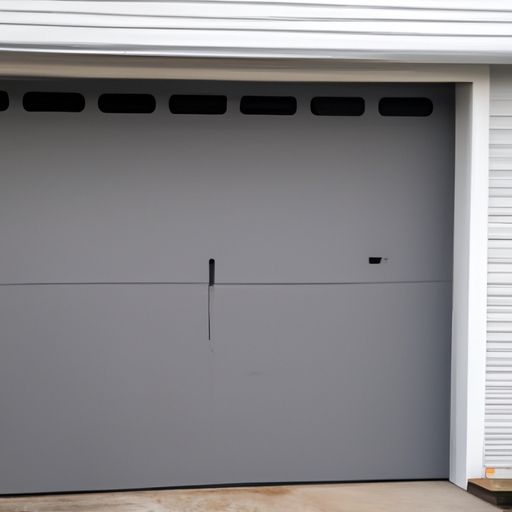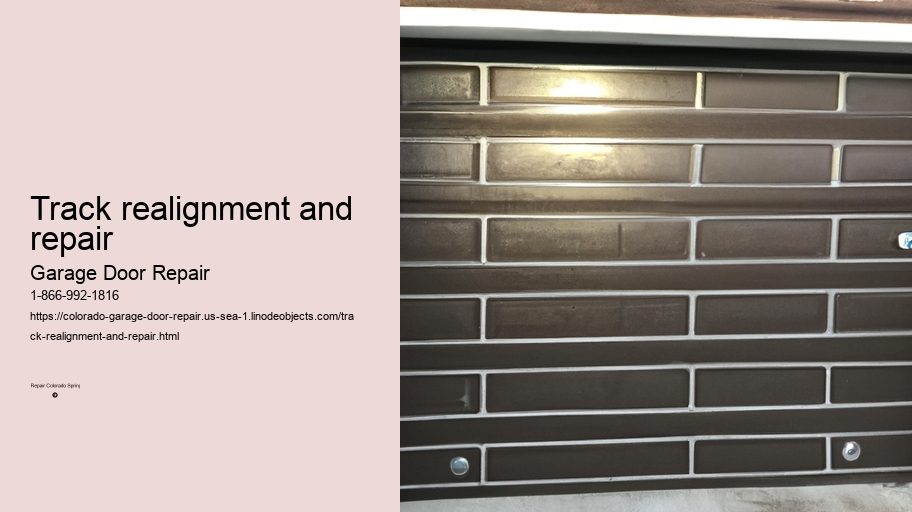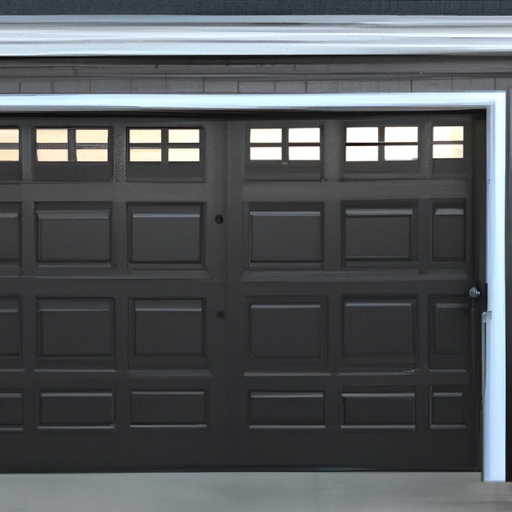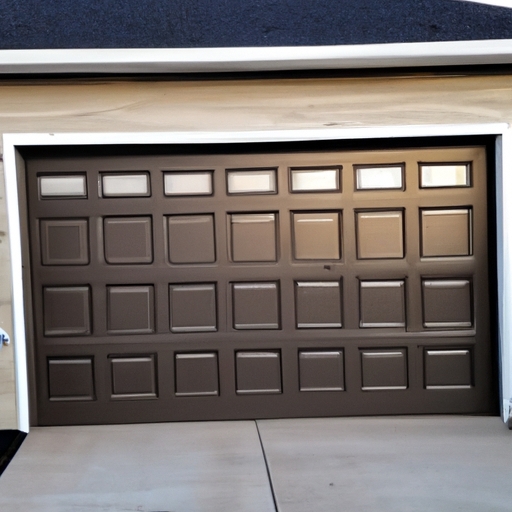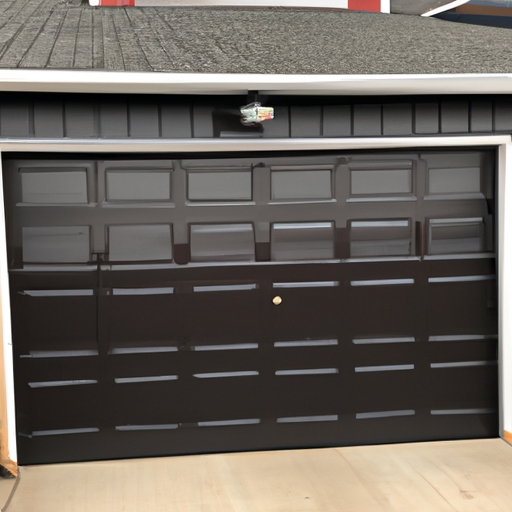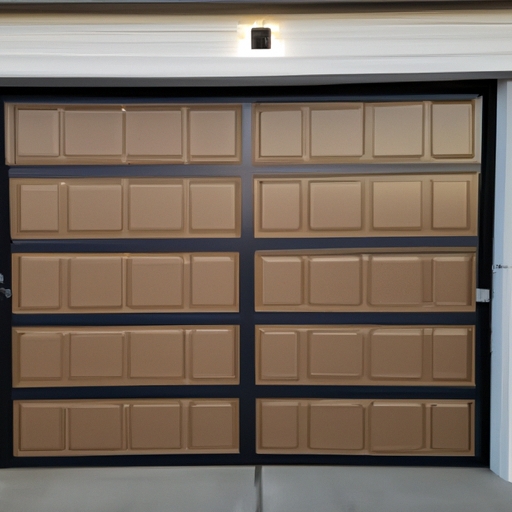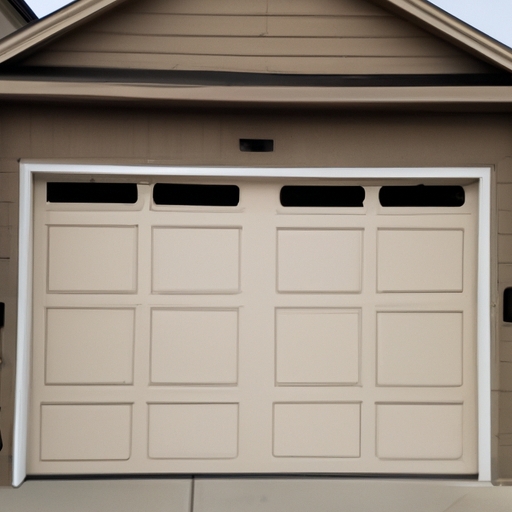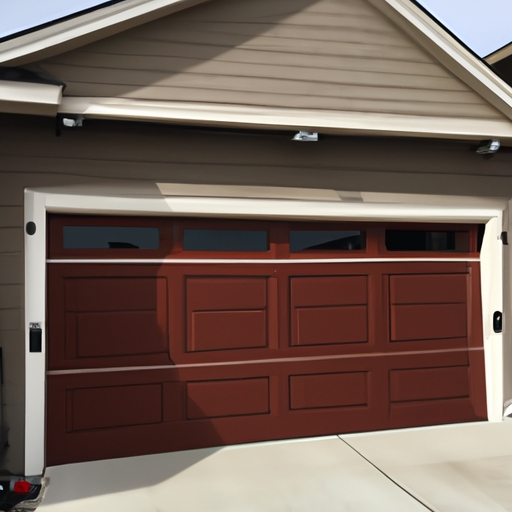Importance of maintaining a properly aligned and functional track for the smooth operation of the garage door
Garage doors are an essential component of any home, providing convenience and security. However, many homeowners often neglect the importance of maintaining a properly aligned and functional track for their garage door. Track realignment and repair play a crucial role in ensuring the smooth operation of the garage door (in fact), preventing potential accidents or inconveniences (!).
When the garage door track is misaligned or damaged, it can cause the door to operate poorly (you know?) or even become completely stuck. This can be frustrating (oh no!) when you're in a rush to leave for work or trying to park your car safely inside the garage. Neglecting track maintenance can also lead to unnecessary wear and tear on other components of the garage door system (!).
Moreover, a misaligned track puts unnecessary strain on the motor and opener mechanism (!). Over time, this can result in increased energy consumption (believe me) and potentially expensive repairs. By regularly aligning and repairing your garage door track, you can save yourself from these costly issues while ensuring optimal functionality.
Proper alignment of the track also enhances the overall safety of your garage door system (!). An off-track garage door poses serious risks as it may suddenly come crashing down unexpectedly (yikes!). This can cause damage to vehicles or even injure individuals nearby. Therefore, regular realignment is necessary to prevent such accidents from occurring.
In conclusion (well), maintaining a properly aligned and functional track for your garage door is vital for its smooth operation (!). Neglecting this aspect may result in inconvenience, increased expenses, and potential safety hazards (!!!). So don't wait until something goes wrong; make sure to schedule regular inspections and repairs to keep your garage door functioning flawlessly!
Common signs indicating the need for track realignment or repair, such as misaligned rollers, noisy operation, and difficulty in opening or closing the door
Track realignment and repair are essential tasks for ensuring the smooth operation of doors. (Oh boy!) When it comes to track realignment and repair, there are common signs that indicate the need for immediate attention. These signs include misaligned rollers, noisy operation, and difficulty in opening or closing the door. (Well, you know!)
One common sign that indicates the need for track realignment or repair is misaligned rollers. Misaligned rollers can cause the door to become stuck or unevenly aligned with the track. This can result in a jerky or bumpy movement when opening or closing the door. (Golly gee!)
Another sign is noisy operation. If you notice squeaking, grinding, or scraping sounds when operating your door, it could be a clear indication that track realignment or repair is necessary. Noisy operation not only disrupts peace and quiet but also indicates potential damage to the tracks that may worsen over time if left untreated. (Oopsie daisy!)
Difficulty in opening or closing the door is yet another telltale sign of track misalignment or damage. If you find yourself struggling to slide your door smoothly along its track, it's probably time to consider realignment or repair as a solution. The added effort required to operate the door may lead to frustration and inconvenience on a daily basis. (By golly!)
In conclusion, misaligned rollers, noisy operation, and difficulty in opening/closing are all common signs indicating the need for track realignment and repair. By addressing these issues promptly, homeowners can ensure their doors function properly without any hitches! So don't delay in seeking professional assistance if you experience any of these signs; otherwise, matters might worsen over time!
Step-by-step guide on how to realign a garage door track, including adjusting the brackets, tightening screws, and ensuring proper alignment with a level
Track realignment and repair can be a daunting (task, job) for many homeowners. However, with the right tools and a step-by-step guide, you can easily tackle this issue on your own. In this essay, we will discuss the process of realigning a garage door track to ensure smooth operation.
Firstly, it is important to (start off by) inspecting the brackets that hold the track in place. Look out for any loose screws or bolts that may have caused misalignment. If you notice any issues with the brackets, tighten them using a wrench or screwdriver as needed.
Next, take a level and place it on the track to check if it is properly aligned. This will help determine if adjustments are necessary. If there are discrepancies in alignment, gently tap the track with a rubber mallet to move it into position (without damaging it).
After making these initial adjustments, (moving forward), you should proceed to tighten all screws along the track. Be sure not to overtighten as this may cause further damage.
To ensure proper alignment of the garage door track, use a level again after tightening the screws. The bubble in the level should now rest between the two lines indicating balance.
Finally, test your garage door by opening and closing it several times to see if it operates smoothly along its tracks. If there are still issues persisting despite your efforts (in vain), consider seeking professional help from a garage door repair service.
In conclusion,(to wrap things up), realigning a garage door track may seem like an overwhelming task at first but following this step-by-step guide makes it much simpler! By inspecting brackets, tightening screws, and ensuring proper alignment with a level, you can restore functionality to your garage door without spending excess money on professional assistance.(Hooray!) So go ahead and give it a try – you'll be amazed at what you can accomplish!
Overview of common issues that may require track repair, such as bent or damaged tracks due to accidents or wear and tear
Track realignment and repair is a vital aspect of maintaining the functionality and safety of railway systems. Trains rely heavily on well-maintained tracks to ensure smooth and efficient operations. However, there are common issues that may require track repair, such as accidents or wear and tear. These problems can result in bent or damaged tracks, which must be addressed promptly to prevent further complications.
One significant issue that often necessitates track repair is accidents. (Oh no!) Accidents can cause severe damage to the tracks, especially if they involve derailments or collisions. The force exerted during these incidents can lead to bent or twisted tracks (which is not good!). In such cases, immediate repairs are crucial to restore the integrity of the railway system (and avoid potential disasters!).
Additionally, wear and tear over time can also contribute to track issues (oops!). Continuous use and exposure to various weather conditions gradually degrade the tracks' condition. This normal degradation process may result in unevenness or misalignment of the rails (yikes!), affecting train stability and overall performance.
To fix these problems, track realignment becomes necessary. Realignment involves adjusting the position of the tracks to ensure they are parallel and properly aligned with each other. By doing so, trains can travel smoothly without any disruptions caused by misaligned tracks.
Track repair is another essential aspect of maintaining a functional railway system (you bet it is!). Damaged sections need repairing as soon as possible to guarantee safe train passage along the entire track network.
In conclusion, accidents and wear and tear pose common challenges that require track realignment and repair. Prompt attention to these issues is vital for ensuring efficient train operations while prioritizing passenger safety (!). Regular maintenance procedures play a key role in identifying potential problems early on, preventing major disruptions down the line (!). Therefore, proper upkeep of railway tracks remains critical for maintaining a reliable transportation system (!).
Transition phrase: Moving forward...
Detailed instructions on repairing a damaged garage door track, which may involve removing the old track, replacing it with a new one, and securing it properly
Track realignment and repair can be a daunting task for homeowners (especially those not familiar with such repairs). However, with the right tools and a little know-how, it is possible to fix a damaged garage door track (without having to hire an expensive professional)! In this essay, we will explore the detailed instructions on how to repair a damaged garage door track and ensure that it is properly aligned (so you can avoid any further issues down the road).
To begin, let's discuss the first step in repairing a damaged garage door track: removing the old track. This may seem like a difficult task, but fear not! With some elbow grease and patience (!), it can be accomplished. Start by disconnecting the power source to the garage door opener (to prevent any accidental injuries) and then proceed to loosen the bolts that hold the track in place. Once all bolts are removed, carefully remove the old track from its position.
Now that we have successfully removed the old track, it's time to replace it with a new one. This step might sound complicated, but trust me - it's easier than you think! Begin by placing the new track in position, ensuring that it aligns perfectly with both sides of the garage door opening. Securely fasten the new track using bolts or screws (whichever is recommended for your specific type of track). Once everything is securely in place, give yourself a pat on(!)the back - you've just installed a brand-new garage door track!
Lastly, let's talk about securing the newly replaced track properly. This step is crucial as an improperly secured track could lead to future problems (!), such as misalignment or even damage to your garage door itself. To ensure proper security, tighten all bolts or screws used during installation until they are snug but not overly tight(***unlikely***)- remember, we want stability without causing any damage. Additionally(!), double-check that both sides of the track are aligned correctly and that there is no sagging or bending. If everything looks good, go ahead and give your garage door a test run to confirm its smooth operation.
In conclusion, repairing a damaged garage door track is an achievable task for any homeowner (with a little determination and patience). By following these detailed instructions, you can successfully remove the old track, replace it with a new one, and secure it properly (!), ensuring that your garage door operates smoothly. So don't let a damaged track get you down - roll up those sleeves and get to work. Your garage door will thank you(!) in the long run!
Tips for preventative maintenance to avoid future track problems, such as regular lubrication of rollers and hinges, checking for loose hardware, and clearing any obstructions from the tracks.
Track realignment and repair are essential tasks (in order to) ensure smooth and efficient functioning of tracks for various purposes. Neglecting these tasks can lead (to potential) accidents, delays, and costly repairs. Therefore, it is crucial to conduct regular inspections and take necessary measures (for avoiding) track problems.
Firstly, when it comes to track realignment, it is important (not to forget) that even the slightest misalignment can cause significant issues. Regular inspections should be conducted (so as) to identify any signs of misalignment promptly. If detected, immediate action must be taken (such as) adjusting the track alignment using appropriate tools and techniques.
Furthermore, during track repair, checking for loose hardware is a vital step. Loose bolts or nuts can compromise the stability of the entire track system. Therefore, securing all fasteners tightly should be done regularly (in order not to risk) any potential accidents or damage.
Additionally, clearing any obstructions from the tracks is crucial for maintaining optimal functionality. Debris like dirt or rocks can hinder smooth movement and potentially damage the tracks over time. Thus, removing such obstructions should be a routine practice (so that no obstacles will impede) the safe operation of the tracks.
Moreover, lubrication plays a key role in preventing future track problems. Regular application of lubricant on rollers and hinges reduces friction and wear-and-tear on these components. This helps prolong their lifespan while ensuring smoother movement along the tracks.
In conclusion,(to sum up), preventative maintenance is imperative for avoiding future track problems like misalignment or malfunctions due to loose hardware or obstructions. By conducting regular inspections,(you will be able to detect any issues early on,) taking necessary actions promptly,(and thereby minimize risks.) Remembering(Always remember that) proper lubrication is also vital in keeping your tracks running smoothly! So make sure you follow these tips diligently!(Take note!)
